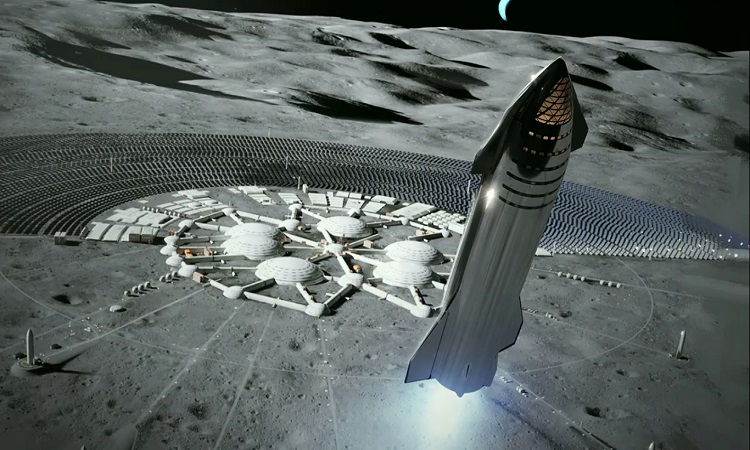SpaceX’s Starship spacecraft could help clean up Earth’s orbit between missions to the moon or to Mars, says the president of the company. In this case, it would be about desorbing some dead rocket bodies, left by others.
The problem of space debris
Earth’s orbit is currently polluted with more than 100 million space debris, 30,000 of which are over ten centimeters in diameter. These objects, which fly through space at several thousand km / h, then pose a real threat to the satellites and the occupants of the ISS. And it’s not over. The costs of developing, building, and launching satellites are falling and Earth’s orbital space paths are increasingly congested. Also, the risk of collisions will multiply.
What’s the worst that could happen to us? Beyond a certain threshold, the volume of space debris in low orbit could be so large that these collisions will become inevitable. There would then be a terrible chain reaction. This is called “Kessler syndrome”. This effect is the basis of the plot of the film Gravity (2013). By this effect, the number of space debris in low orbit would therefore continue to grow exponentially, until the day when all this pollution would make space exploration impossible. We could also say “goodbye” to the satellites on which all of our modern society relies.
In order to respond to this threat, several solutions are currently being devised, such as automated maneuvers to prevent collisions or even space waste collection means. We know, for example, that ESA is offering satellite capture with nets, while China is considering using lasers.
What if SpaceX also gave a helping hand with cleaning up? After all, society is a major driver of this rapid growth in the satellite population in Earth orbit.
The Starship to clean up space
Company President and COO Gwynne Shotwell are not against it. In a recent online interview with Time Magazine, published on October 22, the interested party indeed underlined the idea of relying on the Starship spacecraft “to go to certain dead rocket bodies, other rockets. people, of course. Basically, we could get some of that garbage out of space and bring it back to Earth. ”
The “of course” in this statement is a little nod to the Starship’s intended reusability, which will be total.
The Starship (about fifty meters high) represents the future of SpaceX. If all goes as planned, this reusable Super Heavy launcher-boosted vessel will be able to free satellites, transport cargo and astronauts to the Moon and to Mars, but also allow ultra-fast “point-to-point” travel, here on Earth. On paper, that the structure could also collect and describe annoying, and potentially dangerous orbital charges would not be so surprising after all.
On the calendar side, we know that SpaceX recently deployed the SN8, the first true prototype of Starship. The company could then soon attempt a “jump” to fifteen kilometers above sea level, before considering a first suborbital test at an altitude of 200 km early next year. In 2023, the first tourist flights around the moon should then take place. According to recent statements by Elon Musk, SpaceX is even on track to launch its first unmanned mission to Mars by 2024.




